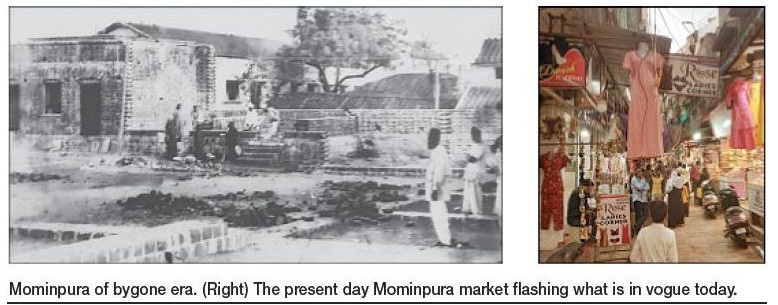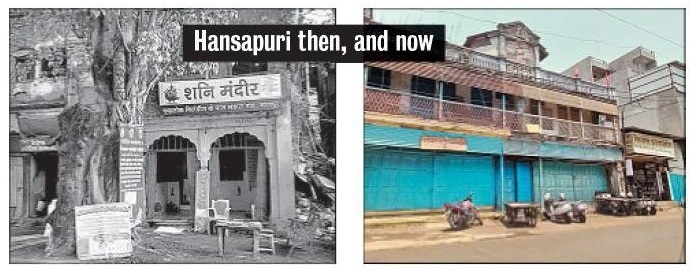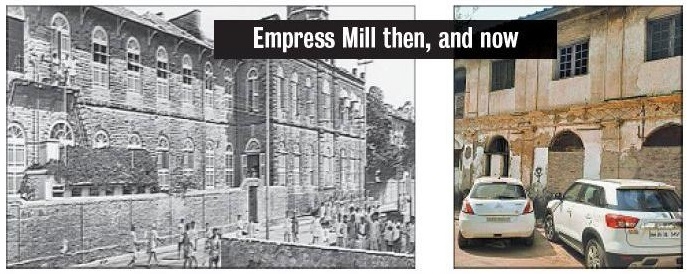Weaving profession, culture dying slow death in Mominpura, Hansapuri: Study
| Date :18-Sep-2022 |

By Vikas Vaidya :
Nagpur was fourth largest cotton trading city of India at one point of time and was known for its best quality cotton textiles produced by weaver communities and the Empress Mills later. Fine quality of cotton textiles was an identity of the city of Nagpur then. The weaving art and the culture flourished in Mominpura and Hansapuri areas, but now, it is gradually dying. As this art is on the verge of extinction for various reasons, there is a change in culture in the two areas--Mominpura and Hansapuri.

This was revealed in the study conducted by the team headed by Dr Priya Chaudhary, Head of the Urban Design Department at Smt Manoramabai Mundle College of Architecture (SMMCA). The team deliberated on the understanding of these culturally rich areas, their current status and thus, proposals are suggested for each of the areas with detailed documentation, identification of issues and proposed area-specific interventions. MArch (Urban Design) students have worked on the continuity of the strong identity of the areas and the city at large with focus on visual character, social structure, economic activities and the vibrant culture based on the rigorous interaction with the local communities. There were lot of first hand surveys done on site and due considerations were given to the preferences of the local community of 3 localities--Hansapuri, Mominpura and Empress Mill Colony. Narrating the brief history of all the three areas, Dr Chaudhary said, “Mominpura is a neighbourhood in Central Nagpur. Momin means the one who weaves and the area Mominpura has the historic narrative as Muslim weavers community is settled in that mohalla. It has a typical mohalla architecture, which has interesting features of Mughal architectural style.” Hansapuri area and market being about 110 years old, there are many old residences and religious places, which radiate the cultural glory of those times which is unseen in even many old areas in the city. Hansapuri main street, which is Old Bhandara highway, is well-connected with neighbouring cities.

The large weaver community in these areas had weaving as the largest earning resource. But Empress Mill was set up in 1877 by Sir Jamsetji Tata and it started changing the socio-economic culture of these localities. The mill was known as The Central India Spinning Weaving and Manufacturing Company, Empress Mills. It employed as many as 17,500 workers, probably the largest industrial establishment in Central India. At the same time, Empress Mills Colony was set up for its workers and managers. With the weaving business on the verge of extinction, Mominpura has itself moulded and adopted night food culture. During the month of Ramadan, the main street in Mominpura takes the form of festive street where clothes, snacks, footwear, ornaments and other wares are sold. Similarly, Hansapuri has become Central India’s biggest Chudi market and its main street serves as shopping street.
Exhibition today
Urban Design Department and INTACH Heritage Club of Women’s Education Society’s Smt Manoramabai Mundle College of Architecture have organised an exhibition, ‘Reinvigorating the cultural landscapes of Nagpur: Case of Mominpura, Hansapuri and Empress Mill Colony’ on Sunday from 10 am to 5 pm. All this work will be exhibited at the 3 locations in the respective areas for locals so they can understand their neighbourhood from past to present and be aware and responsible decision-makers for its future. The primary purpose as an academic institute is the creation, dissemination, preservation and application of knowledge for the betterment of the society. SMMCA values open access to information, free and lively debate with mutual respect for individuals. The exhibitions will be held at Urdu Upper Primary School, Mohammad Ali Road, Mominpura; Shiv Temple, Empress Mill Road-1, Santra Market and Chhota Ram Mandir, Hansapuri. Dr Priya Choudhary, Head of the Urban Design Department, along with Tanvi Burghate and Divya Tadas, guided the students along with Sandeep Phate and Akash Baraiya. Dr Shyamala Nair, Secretary, Women’s Education Society that runs SMMCA, Dr Avinash Deshmukh, Director and Dr Roopal Deshpande, Principal, SMMCA have urged students, academicians, professionals from the fraternity to visit the exhibition in large number.